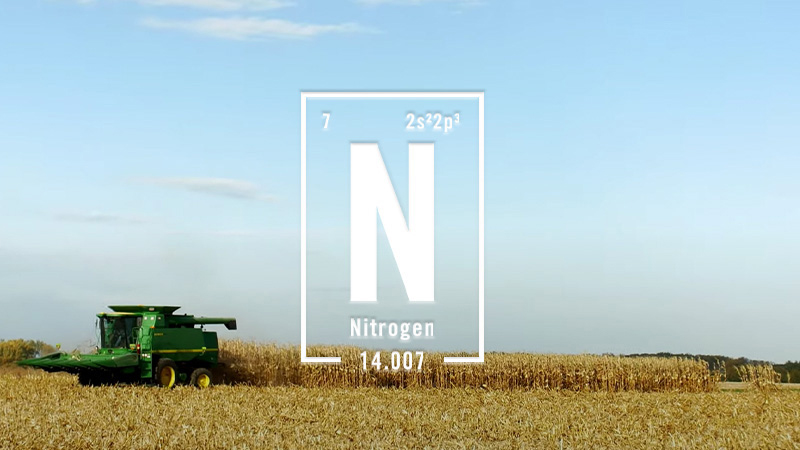Biofertilizers Primed for More Growth
Being involved in the crop nutrients marketplace these past few years has been a rollercoaster of ride for many. From the beginning of market disruptions brought on by the global pandemic to logistics problems to skyrocketing fertilizer prices, the overall market has been buffeted from all sides.
As the industry prepares to enter the 2023 growing season, many of these uncertainties have lessened somewhat — particularly overall crop nutrient prices. However, according to market watchers, the door for biofertilizers to make new inroads into this space remains open.
“We believe that the trends that drove biofertilizer sales to new heights in 2022 will remain persistent for 2023,” says Mike Messman, President and CEO for DPH Biologicals. “Even though fertility prices dropped in January, input costs are projected to remain high. As a result, farmers continue turning to biofertilizers to lower their fertilizer bill without sacrificing yield or crop quality. Plus, with 2022’s supply-chain challenges fresh on their minds, growers are looking to domestically sourced biofertilizers such as SP-1 Classic to lower their fertilizer bill while also hedging against unforeseen future supply chain shocks.”
In addition to offering a safeguard against higher traditional fertilizer prices and future supply chain disruptions, Gilman Farley, President, Biodyne USA/Partner, BW Fusion, believes another factor that will keep biofertilizer market expansion front-and-center during the 2023 growing season ties to the increasing number of players in this sector.
“One factor is the increased amount of biostimulants/biologicals/biofertilizers on the marketplace,” says Farley. “[There are] many new entrants in the space, from start-ups to mergers and acquisitions, and lots of interest from outside funding sources and venture capital hitting this space. This is exciting potentially for the future of agriculture but can be confusing for the entire sales channel, especially at the farmgate level.”
Another factor in favor of adoption of the biofertilizer technologies, he adds, is the current supply chain issues of macronutrients. “The cost and supply of nitrogen, phosphorus, and potassium is volatile at this point due to a variety of reasons, including the current state of the global economy and conflicts between Ukraine and Russia,” says Farley. “This uncertainty along with the messaging to the market from the many new companies is driving increased adoption of the technologies, at some level, even if only for a trial or test basis initially.”
Moving into the Midwest
Up until now, much of the market activity in biofertilizers (and biologicals in general, say analysts) has been in the areas of specialty crops and tree nuts/fruit. This has meant much of the market penetration has occurred in the coastal areas of the U.S. — the Northeast and West Coast — with more usage taking place in states such as New York and Michigan. Gaining a foothold in the Midwest and Mid-South, where row crops are king, has proven a bit more difficult for the industry, say market watchers.
“Ten years ago, trying to talk to growers, retailers, and agronomists about biologicals was like talking about farming on the moon,” says Farley. “These technologies were seen as true ‘snake oil’ and generally dismissed by traditional agriculture.”
Fortunately, he adds, there were pioneers that took a leap of faith on biologicals that led the charge for data, adoption, and innovation.
“It is fun to look back and see how this space has evolved,” says Farley. “But for as far as we have progressed, we still probably know less than 1% of what is truly going on in the soil from a biological and biochemistry perspective and how they interact in the overall system of row crop agriculture. Over the past 10 years, we have been fortunate enough to have our bios and biofertilizers on tens of millions of acres across the Midwest/Mid-South and our footprint continues to expand. Our business is one of innovation and education and has grown by focusing on relationships and mutual benefit.”
DPH’s Messman agrees with this assessment. “We experienced strong biofertilizer sales in the Midwest and Mid-South row crop regions in 2022, but DPH Biologicals believes the past year was just the beginning of Corn Belt market penetration,” he says. “We foresee continued sales opportunities in 2023 as more commodity crop growers experience for themselves the cost-savings, soil-health, and yield-increasing benefits of proven and tested biofertilizers. As such, DPH Biologicals is actively expanding our sales and distribution presence throughout the region.”
The Products Leading the Way
Besides expanding its sales and distribution sectors, DPH also continues to upgrade its biofertilizer SP-1 Classic for the marketplace. “In 2022, growers asked DPH Biologicals for more and easier ways to incorporate our products into their unique production regime,” says Messman. “In 2023, we are delivering on that request with newly received OMRI certification for our proven SP-1 Classic complete biofertilizer. In addition, SP-1 Classic has new application recommendations for foliar-based delivery, giving growers more options for integrating biofertilizers into their practices no matter their equipment availability.”
Meanwhile, Helena Agri-Enterprises has developed Zypro for the biofertilizers segment. In the field, says the company, Zypro delivers protected enzymes directly to the soil with a stable formulation that fits into fertility programs. According to Helena, “the product optimizes the native soil microbial community to boost productivity, kickstart root growth, and increase nutrient uptake.”
Over at Biodyne, the quest for new and improved biofertilizer offerings to share with grower-customers also continues. “When we launched in 2013, the message was all about increasing plant health and increasing yield,” says Farley. “Over the next several years, we learned through independent research and our own trials. About 90%-plus of the time when using our biological, we saw quicker and more even emergence, better early plant health and vigor, and increased plant biomass. Fast forward to harvest and an increase in yield maybe happened 65% to 75% of the time.
“Through continued research and our relationship with Next Level Ag Labs and the Agronomy 365 Platform, we have learned that there are many synergies and benefits can be obtained through a program approach and creating balance versus a one-size fits all approach,” he continues. “This has led to many innovations that are exciting and some never seen before in agriculture. For example, nutrient cycling through strategic application of our Environoc 401 and Environoc 501 technologies to maximize the benefits of each microbial team’s ability to transform unavailable nutrients from an unavailable form to a plant available form. This synergy is maximized by carbon retention by increasing soluble carbon through carbon release for increased carbon availability for sustained microbial bio stimulation.”
These efforts also extend to the soil, adds Farley. “A healthy plant requires a resilient soil, and you cannot have a resilient soil without a healthy plant,” he says. “Our belief is that a ‘healthy plant is the ultimate biostimulant’ and by combining the microbiology and science, with soils, tissues, and agronomy has led us to new in-furrow and foliar innovations and a true program approach to the acre. This approach creates optimum soil/plant nutrient timing and balance for better consistency and yield. Biodyne/BW Fusion take a balanced approach of potential nutrient reduction of 20 pounds of nitrogen, 50 pounds of phosphorus, and 20 pounds of potassium, as well as 100 pounds of pell lime. At the end of the day, yield is still the desired goal but the reallocation of traditional fertilizer dollars to a biological approach is a real-world opportunity as the market moves forward.”
Looking beyond the 2023 growing season, Farley foresees more market acceptance of biofertilizers from the entire agricultural business. “The biofertilizers market will continue to grow in the next years and growers, retailers, manufacturers, are all seeing value and will continue to invest resources to the development of their products in this space,” he says. “I would imagine that the market will continue to grow and this biofertilizers market is still in its infancy. It is an exciting time as this market grows, and we all learn together how to optimize opportunities around nutrient efficiency and increased farmer return-on-investment.”
DPH’s Messman also believes market growth is in the biofertilizers category future. Indeed, he points to several global influences and trends that seem to make this belief all the more certain.
“In addition, despite rising food costs due to inflation, societal pressure for more sustainable approaches to crop production remains high, if not higher, in 2023,” he says. “Growers continue choosing biofertilizers as a practical and economical way to adopt climate-smart practices while capturing a larger share of the sustainable food market demand.”






